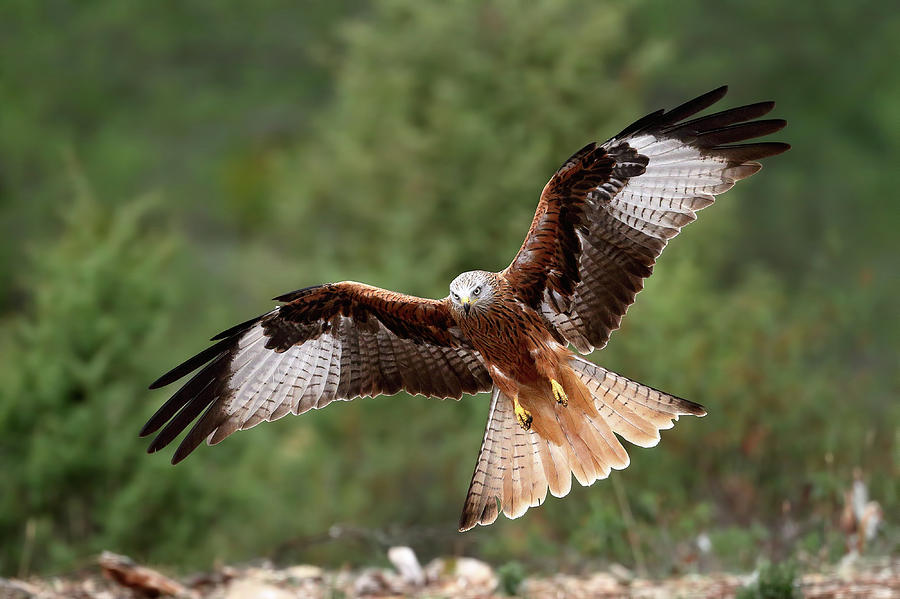


Most red kite populations breeding in northern and central Europe migrate south or southwest to spend the winter in regions fringing the northern Mediterranean. Kites sometimes gather to feed at garbage dumps or rest in communal roosts, especially in winter Juveniles, in particular, may wander for one or more years, until they’re able to breed. BEHAVIORįor much of the time, the red kite is solitary. A major conservation program also involves releasing juveniles from the healthy Spanish i population into Britain. Now, with the cooperation of farmers and with legal protection, it’s recovering in western Europe. It feeds largely on carrion, but is often blamed for the death of sheep and lambs. The long-term decline of the once-common red kite, which accelerated during the 19th century, resulted mainly from persecution by farmers and gamekeepers. The female passes morsels of meat to her brood. Later, when the chicks can feed themselves, the female also hunts for her offspring. The female broods the newly hatched chicks for two weeks, while her mate brings food. After mating, the female usually lays two eggs, incubating them for about a month. They may also take over the old nest of a buzzard or raven. Pairs may build a nest or add to one that they’ve built during previous seasons. In March and April, at the start of the breeding season, pairs perform display flights over their territory, circling at great height or chasing each other Rival males may challenge each other by seizing the opponent’s talons or cartwheeling down with their talons interlocked. In many places, kites are very shy and quickly take to the air at the first signs of disturbance. Joining others at a dump, it eagerly feeds on any scraps of animal matter that it can find. Once the kite spots a source of food, it begins to lose altitude by gliding slowly in wide circles. It can catch birds and insects in the air, but only rarely engages in a chase, as it lacks the speed of falcons or hawks.Ī red kite circles high overhead, scanning the ground below as it maneuvers with great skill. To locate food, the kite circles high above the ground or glides at treetop level, diving to catch live prey by surprise. The red kite also steals food from herons and other predatory birds. Garbage and carrion, especially dead sheep, become more important in winter. In the breeding season, it takes a greater proportion of live prey: mammals up to the size of a hare and birds, including small species and the young of larger ones, such as crows. The kite has a varied diet, which depends upon the food available at a particular time of year. Until the 16th century, red kites were a common sight in London. The isolated subspecies of red kite on the Cape Verde Islands is smaller and darker than red kites elsewhere.Ī pair of red kites often weaves pieces of plastic, rags or paper into their nest. Kites flown by humans get their name from the bird. In medieval times, red kites occurred in large numbers in many of the cities of western Europe - until improved human cleanliness reduced the amount of food available.Ī Human nature Kites use man-made habitats, like farmland. It often visits garbage dumps at this time of year Demonstrating its opportunistic nature, the red kite also feeds at the roadside, on wildlife fatalities, as well as outside slaughterhouses. In winter, the red kite uses a wider variety of habitats, ncluding treeless agricultural land, scrub and wetlands. In central Wales, some stay within 1-2 miles of their roosts and nests others travel up to 9 miles or more for food. In the north, it occurs on nonintensive farmland with small fields and hedges, interspersed with woods, rough pasture and moorland. In the south of its range, it’s found mainly in forested valleys and areas of traditional, mixed farming. The red kite, a bird of lightly wooded terrain, breeds and roosts in stands of trees and hunts over open areas. Able to soar and hang in the air without visible effort, the red kite looks for food from its aerial “perch.” It feeds mainly on carrion or takes small prey by surprise.


 0 kommentar(er)
0 kommentar(er)
